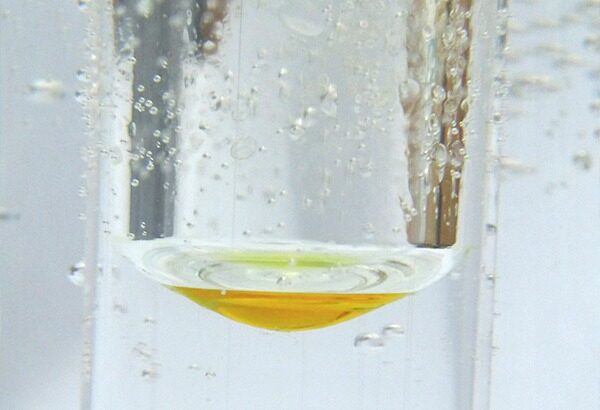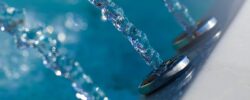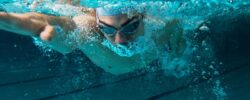Why is Lifetech’s unique technology LifeOX® M the best available technology for pool treatment
Why is Lifetech’s unique technology LifeOX® M the best available technology for pool treatment
LIFETECH’s LifeOX® M technology revolutionizes pool water treatment by combining ozone, medium-pressure UV, and advanced oxidation processes to eliminate harmful trichloramine and reduce chlorine usage. This innovative solution ensures healthier water, free of odors, and safe for even toddlers and asthmatics. With over 35 years of expertise, LIFETECH delivers proven, efficient technologies trusted by major projects like the Luzhniki Olympic Center.
Brief history of LifeOX®M technology
LIFETECH has more than 35 years of experience in the development of ozone, UV, and AOP (Advanced Oxidation Process) technologies. It produces ozone generators ranging from the smallest, producing only a few mg O3/h, to the largest, producing kg O3/h. It also produces both low-pressure and medium-pressure UV systems. AOP systems manufactured by LIFETECH utilize all combinations of ozone, hydrogen peroxide, low-pressure, and medium-pressure UV systems.
LIFETECH is therefore not bound by any technical limitations in the design of optimal technology, since it produces all the necessary equipment and technology. LIFETECH always presents the Best Available Technology (BAT) to achieve the best water treatment with minimum consumption of fresh water, minimal power consumption, and the fastest possible return on your investment. Achieved water quality ensures a very pleasant environment around the pool, without the typical pool odour. Swimming is also suitable for toddlers and asthmatics.
LIFETECH develops, manufactures, and implements ozone, UV, and AOP technologies for the treatment not only of pool water but also of drinking, waste, and industrial water. It has implemented many municipal drinking water treatment plants. Its clients include internationally renowned companies such as Veolia, Wabag, or Culligan.
LIFETECH has developed a unique AOP technology for the removal of dioxins from wastewater for the project “Decontamination of dioxins in Spolana,” under the umbrella of the English company TCSR and the French company Suez Environmental. It also developed AOP technology to remove pesticides from drinking water for Veolia. AOP technology has also been developed for the treatment of recycled water in the wool laundry of the international company Modiano Group. Based on this experience with outstanding AOP technology for drinking and wastewater treatment, LIFETECH has begun to develop AOP technology optimized for pool water treatment. Around 2000, the most efficient water treatment technology was described in detail in the German standard for swimming pools DIN 19 643. As specialists in ozone technology, however, we realized that this technology does not use optimally generated ozone, only to 50%. In addition, this ozone technology (air dryer or oxygen generator, ozone generator, auxiliary pump with injector, reaction/degassing tank with ozone destructor in off-gas, activated carbon filter) occupies a large space in the engine room.
Our first AOP technology, optimized for pool water treatment, is called Combi Ozone/UV and uses ozone and low-pressure UVL systems to produce OH-radicals. Ozone is generated from dry air or dry oxygen to ensure stable ozone production independent of ambient air humidity. We have been using AOP Combi Ozone/UV technology for pool water treatment since 2005.
In another development of AOP technology, we used our technological advantage from the development of medium-UVM systems. One of the great advantages of a medium-pressure UVM system is that it removes the most harmful substance, Trichloramine, from the water, unlike low-pressure UV systems. This Trichloramine causes asthma, burning eyes, corrosion, and the typical pool odour. This results in LifeOX® M equipment – an even more efficient and compact AOP technology than Combi Ozone/UV for pool, drinking, and wastewater treatment.
Positive experience with LifeOX® M technology
The uniqueness of LifeOX® M technology has to be seen in the fact that, after installing the technology on a public aqua park, its attendance has increased from 100,000 people a year to three times, i.e., to 300,000 people a year. Moreover, asthmatics and toddlers could finally visit the aquapark. The reason for this radical increase in interest was to achieve not only exceptional water quality, but also a healthy and pleasant environment in the aquapark. The return on investment in this unique technology was only eight months. Operators of other public water parks and private pools have very similar experiences. In many cases, pool halls were corroded before installing LifeOX® M technology. After the installation of our technology, this serious problem has been eliminated, and they are no longer in danger of collapsing due to corrosion. Sports divers have also learned LifeOX® M technology. The transparency of the water increased. LifeOX® M technology has solved even heavily loaded pools – whirlpools and toddler swimming pools. Without this technology, the values of bound chlorine were around 1.6 ppm, which exceeded several times the hygienic limit of 0.2–0.3 ppm. After installing LifeOX® M, the value of bound chlorine dropped below 0.1 ppm.
Principles for the correct and most efficient design of AOP technology
To make the AOP process using ozone as efficient as possible, the following conditions must be respected.
a) Ozone shall be generated from dry air with as little water vapour content as possible. For this reason, the ozone generator must be equipped with an air dryer or oxygen concentrator. Thereafter, ozone production is maximum and the same throughout the operation. In addition, the discharge element of the ozone generator is not destroyed and the discharge element does not need to be replaced. If ozone is produced from ambient air, then ozone production is highly dependent on the water vapour content of the ambient air, and production may drop to zero. Instead of ozone generation, nitric acid is generated, the discharge element is destroyed, and this discharge element needs to be changed periodically.
b) In order to make maximum use of the generated ozone, it should be dissolved into the treated water as effectively as possible before the dissolved ozone water reaches the UV reactor. This requires an injector which adds ozone to the treated water and a reaction/degassing tank. This ensures maximum transfer of ozone into water and at the same time serves to remove undissolved ozone into the ozone destructor in the off-gas to prevent ozone from entering the environment.
c) If there is no reaction/degassing tank in the technology, this may result in a large noise in the piping system due to air bubbles in the water. These bubbles reach the pool where swimmers swim. There may be ozone in the bubbles. This ozone then stays above the surface of the water, causing an unpleasant odour, irritating the eyes and nose. This is unacceptable from a health point of view.
d) If the reaction/degassing tank is not located upstream of the UV system, then ozone is not sufficiently dissolved in the treated water. Moreover, the ozone present in the bubbles is decomposed by UV radiation and is therefore not used for the treatment of pool water.
e) Low-pressure UV systems in AOP technologies are used as standard. However, medium-pressure UV systems are preferred because medium-pressure UV systems break down the harmful Trichloramines. Low-pressure UV systems do not break down Trichloramines.
f) In order to achieve the healthiest water and the highest quality swimming pool environment, it is necessary to treat all circulating water.
Only AOP technology incorporating all of the above principles can guarantee you the highest quality water, no pool odour, no burning eyes, no red eyes, no corrosion, the ability to keep free chlorine at minimum levels around 0.3 ppm, bathing for toddlers and asthmatics.
Overview of AOP technologies

Ozone is generated in the air by UV radiation in the space between the UV discharge lamp and its quartz shell. The amount of ozone generated depends on the humidity of the air from which the air is drawn into the UV lamp. From there, ozone is sucked into the water using an injector. Water with ozone bubbles passes around the UV lamp, where a partial AOP process occurs. Due to the bubbles in the water, not all generated ozone is used in the AOP process. Bubbles pass further into the piping system and may cause noise. Bubbles also enter the pool. If they contain ozone residues, they create an unpleasant odour above the surface, and the environment can be hazardous to health.

Ozone is generated in the air in the ozone generator. The ambient air is sucked into the ozone generator by the vacuum generated by the injector. The amount of ozone generated depends on the ambient air humidity, as there is no air dryer installed. The generated ozone is sucked into the water using an injector. Water with ozone bubbles passes around the low-pressure UV lamp, where a partial AOP process occurs. Due to the bubbles in the water, not all generated ozone is used in the AOP process. Bubbles pass further into the piping system and may cause noise. Bubbles also enter the pool. If they contain ozone residues, they create an unpleasant odour above the surface, and the environment can be hazardous to health.

Ozone is generated here from dry air, thanks to the installation of an air dryer or oxygen concentrator. Part of the water from the main flow is sucked by the booster pump into the injector, where the water is mixed with ozone. In the reaction and degassing tank, ozone is dissolved in water, and the undissolved ozone gas is discharged to the ozone destructor in the off-gas. From the reaction tank, water with dissolved ozone is released without bubbles. Ozonized water enters a stainless steel UV reactor with a low-pressure UV lamp, where the AOP process occurs. Water without dissolved ozone is leaving the UV reactor. In the Combi Ozone/UV, water is treated with three technologies: ozone, low-pressure UV systems, and the AOP process.

Ozone is generated here from dry air, thanks to the installation of an air dryer or oxygen concentrator. Part of the water from the main flow is sucked by the booster pump into the injector, where the water is mixed with ozone. In the reaction and degassing tank, ozone is dissolved in water, and the undissolved ozone gas is discharged to the ozone destructor in the off-gas. From the reaction tank, water with dissolved ozone is released without bubbles. Ozonized water enters a stainless steel UV reactor with a medium-pressure UV lamp, where the AOP process occurs. Water without dissolved ozone is leaving the UV reactor. In LifeOX® M, water is treated with three technologies: ozone, medium-pressure UV systems, and the AOP process.
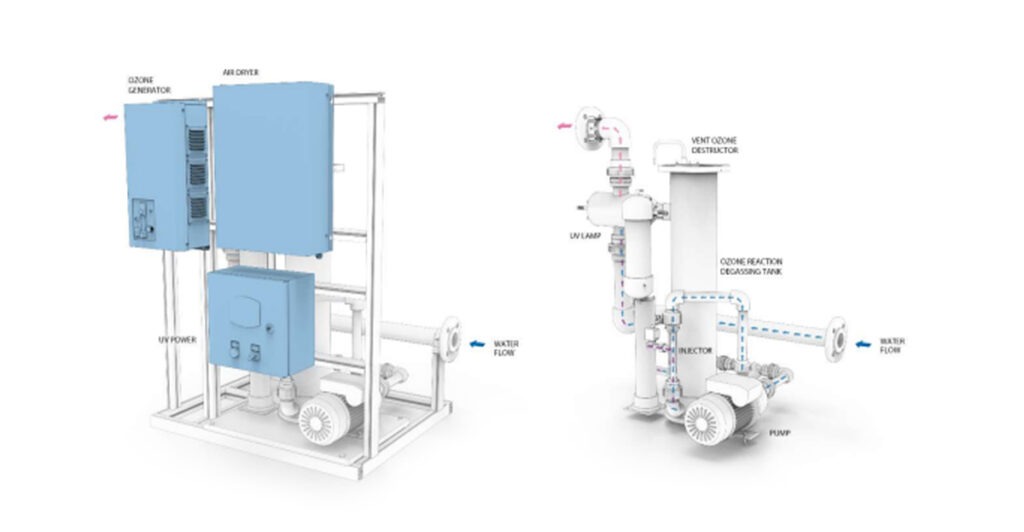
Ozone is generated from dry air due to the installation of an air dryer. Part of the water from the main flow is sucked by the booster pump into the injector, where the water is mixed with ozone. In the reaction and degassing tank, ozone is dissolved in water, and the undissolved ozone gas is discharged to the ozone destructor in the off-gas. From the reaction tank, water with dissolved ozone is released without bubbles. Ozonized water returns to the main stream, and thus all treated water contains dissolved ozone. Ozonized water enters a stainless steel UV reactor with a medium-pressure UV lamp, where the AOP process occurs. Water without dissolved ozone is leaving the UV reactor. In LifeOX® M, water is treated with three technologies: ozone, medium-pressure UV systems, and the AOP process.
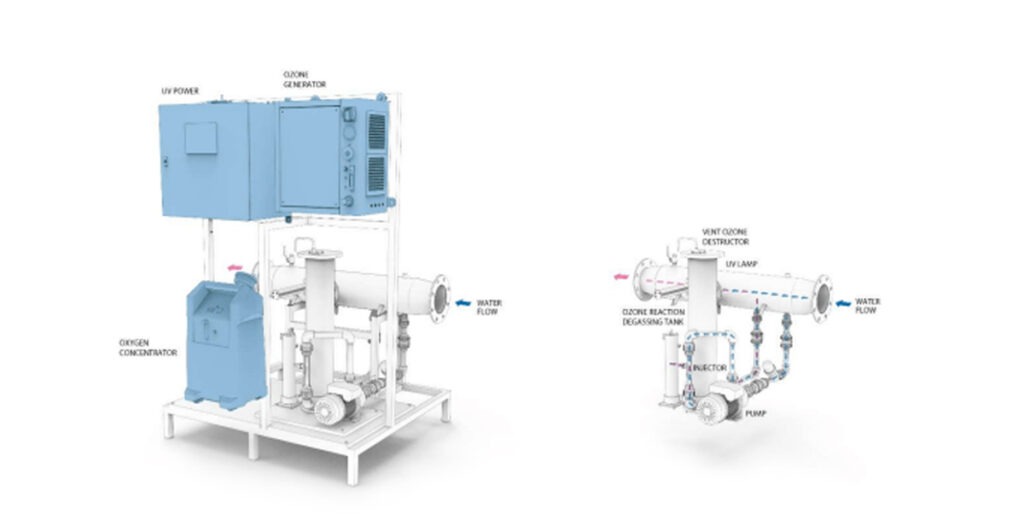
Ozone is generated here from dry oxygen, thanks to the installed oxygen concentrator. Part of the water from the main flow is sucked by the booster pump into the injector, where the water is mixed with ozone. In the reaction and degassing tank, ozone is dissolved in water, and the undissolved ozone gas is discharged to the ozone destructor in the off-gas. From the reaction tank, water with dissolved ozone is released without bubbles. Ozonized water returns to the main stream, and thus all treated water contains dissolved ozone. Ozonized water enters a stainless steel UV reactor with a medium-pressure UV lamp, where the AOP process occurs. Water without dissolved ozone is leaving the UV reactor. In LifeOX® M, water is treated with three technologies: ozone, medium-pressure UV systems, and the AOP process.
clear comparison of low dose aop devices and professional devices with the most efficient aop
| Important Characteristics | Low Cost Low AOP Dose (Del AOP) | Professional AOP technology for Public and Luxury Private Pools (LifeOX®-M) |
| Air Dryer or Oxygen Concentrator | NO | YES |
| Stable Ozone Production independent of environmental humidity | NO | YES |
| Stable Ozone Discharge Element (not necessary to periodically replace) | NO | YES |
| Reaction/Degassing Tank in front of UV system | NO | YES |
| UV system alone destroys Trichloramines | NO | YES |
| Max. water flow treated by one equipment – m3/h | 23 | 250 |
It might interest you
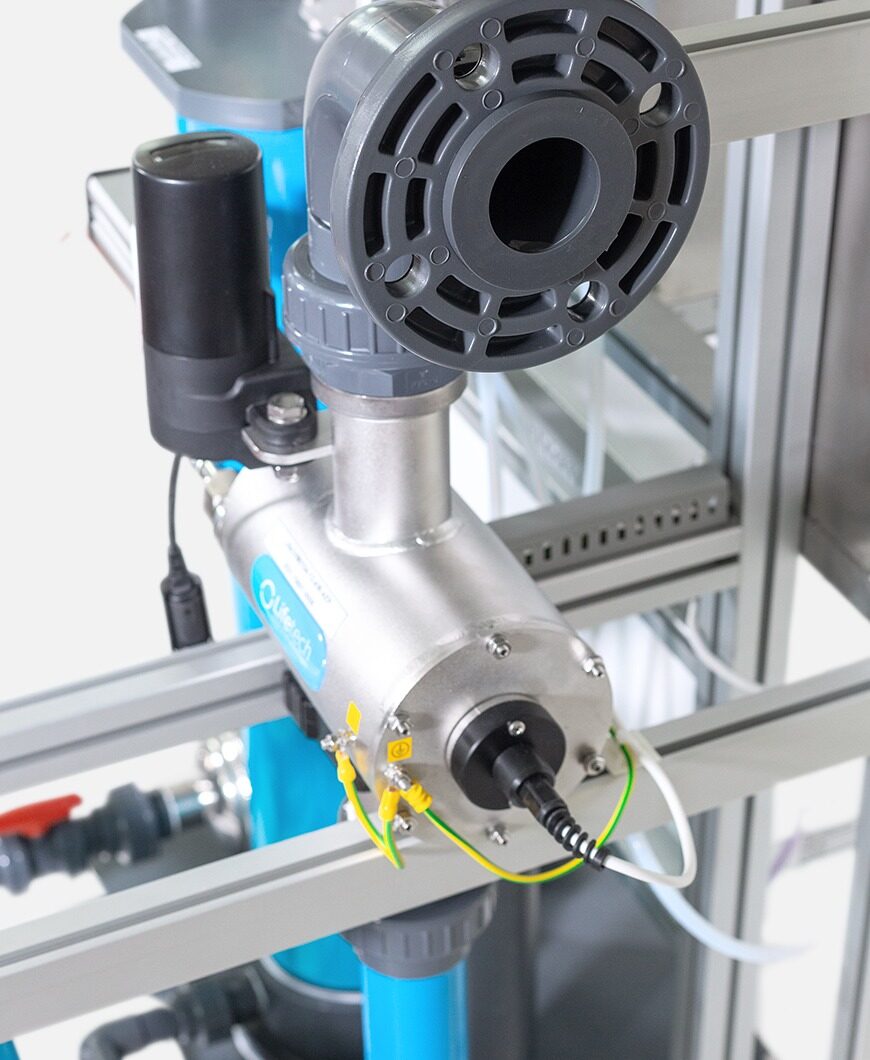
LifeOX® technology provides the highest possible oxidation potential within AOP
Technology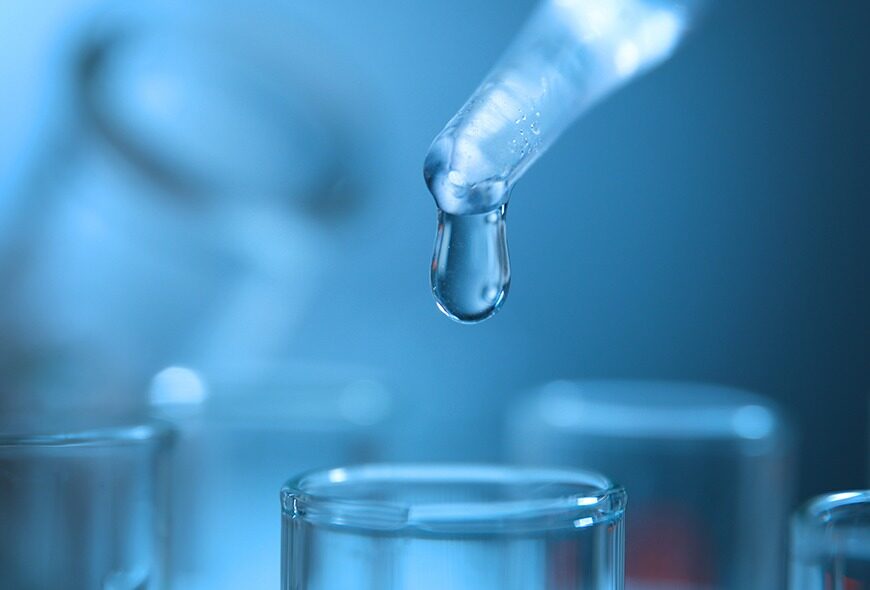
Swimming pools and their health risks: what is not talked about and how to prevent the risks
Healthy pool
LifeAGE® technology sharply reduces the operating costs of medium-pressure UV systems
Technology